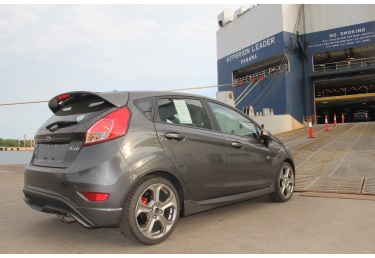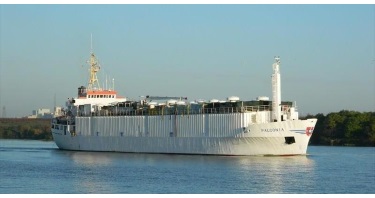Mexico: Lázaro Cárdenas’ First Time Ford Exports to the United States
Ford autos are being exported to the United States for the first time ever from Mexico’s Pacific coast Port of Lázaro Cárdenas.The initial shipment of 68 autos – including the models Fiesta 4 DR/Sedan, Fiesta Hatchbacks 5 DR and Fiesta Titanium 5 DR – was loaded last month aboard the NYK car carrier Hyperion Leader V-56 bound for the Port of Portland (OR).
The autos were assembled at Ford Motor Company S.A. de C.V. plant in Cuautitlán Izcalli, a city in the state of Mexico about 225 miles from the port.
Lazaro Cardenas is Mexico’s leading west coast port handler of auto imports and exports, with volume for 2015 through September up 21 percent from a year ago to 264,918 vehicle units.

Ford Fiesta being driven aboard the Hyperion Leader V-56 in Lázaro Cárdenas for export to the United States.
Photo/API de Lázaro Cárdenas
Olympia Marine Terminal to Load Dairy Cattle Bound for Vietnam
The Port of Olympia is scheduled to load 1,400 head of dairy cattle in late November for export to Vietnam on the livestock carrier M/V Falconia.
Vietnam purchased the heifers in support of its campaign to minimize childhood malnourishment by providing "one glass of milk per child per day."
The cattle will come from Idaho and Washington farms. They will first stop for 28-day quarantine at a United States Department of Agriculture (USDA) approved farm facility for observation by veterinarians prior to export. They will then be transported to the port, where they will board the ship via a specialized platform and gangway that ensures no hoof touches the dock. The loading process is expected to last two days.
The cattle will be accompanied by a veterinarian on board during their two-week voyage to Vietnam. According to the port, the USDA has vetted all links in the supply chain to ensure the animals are humanely handled. The port hopes that this operation will encourage other livestock exporters to consider using its facilities and services.
